BMW X1: What were they thinking?
Here’s something we’re sure you all know about BMW: nearly all of what they make are a dream to drive. Now, then, here’s something we’re sure most of you would not know: their press releases are an absolute nightmare to read! This writer still recalls the nightmare of doing the full technical write-up for the F02 7-series after its launch. Back then, as a part-time writer, he needed a week to prepare the article. It was not just long, but the amount of bombastic technical jargon that BMW sprinkled all over their write-up was simply mind-boggling. It was as though we reading on the Starship Enterprise!
For the all-new BMW X1, we got hold of the press kit, all 27 pages of it, on the thunderstorm-lashed evening of 7 July 2009. There were over 180 images available for download from BMW’s international press website, but we picked out a mere 72 images for downloading. Not too long ago, the idea of a BMW SUV, or Sports Activity Vehicle/Coupe, as they prefer to call it, would have been unthinkable. But, having ransacked all the R&D materials from Land Rover during their brief ownership of the company, BMW needed a channel to practice its new found four-wheel drive capabilities.

One of over 180 official images of the new BMW X1.
It started in 1999 with the X5, and since then it has gotten a little out of hand. For those who find the X5 too big, they can go for the smaller X3. Those who want the height of an SUV (sorry, SAV…) but the look of a sports car have the X6. Now, added to the mix is the X1, codenamed E84 in BMW’s internal model numbering nomenclature. There’s little doubt that the X1 will not only turn out to be an engineering masterpiece, but, like all X cars, it will also outhandle the competition. The question remains, is there a need for such a product? Just how many new niches do BMW think they can come up with?
Well, you can argue all those points till the cows come home. The fact is that BMW has already poured the millions in the R&D, set up the plants, and laid all the marketing groundwork. The X1 will hit the roads, whether you like it or not.
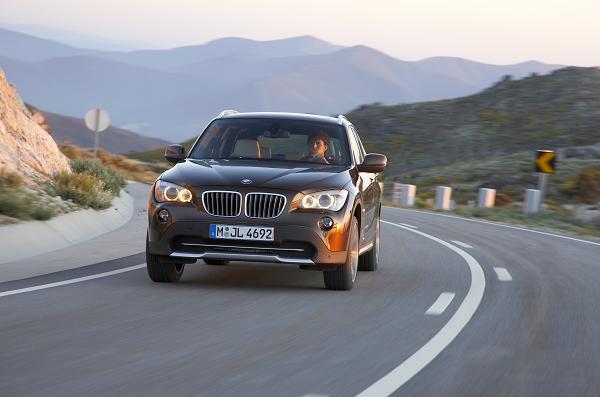
BMW X1 – coming soon to a showroom near you… whether you like it or not!
Your options
As of press time, BMW plans to make the X1 available in four engine options (one petrol, three diesel) and two drivetrain options (RWD or AWD), with a total of six possible model combinations. At the top of the range is the petrol-powered xDrive28i (get used to this model naming convention), with the 3.0-litre version of the famed N52 straight six engine under the hood sending 265hp & 310Nm to all four-wheels.

xDrive28i is the only petrol version on offer.
For the three diesel engine options, and there’s no better way of putting this, but BMW is cheating here. There really is only one: the 1,995cc N47 four-cylinder diesel tuned to three different output levels – 143hp, 177hp and 204hp. In its 204hp state of tune, the engine is offered only with AWD in the form of the xDrive23d. The other two are offered with the option of RWD and AWD with the 143hp version offered in the sDrive18d and xDrive18d respectively. Similarly, the 177hp versions are the sDrive20d and xDrive20d.
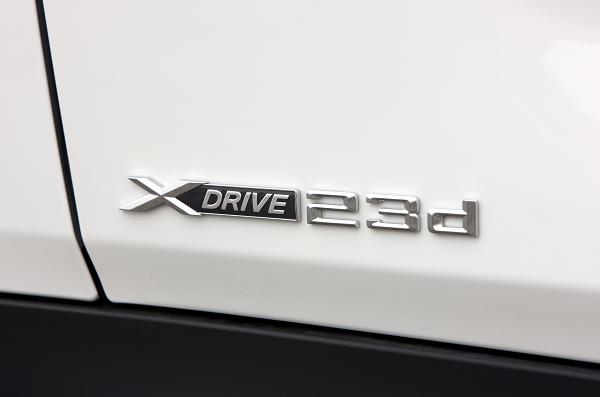
204hp AWD xDrive23d tops the diesel range.
Except for the xDrive28i and the xDrive23d, which come with six-speed autos as standard, the entire X1 range is offered with six-speed manual transmission, though the xDrive20d gets the six-speed auto as an option as well. If reading all the above does nothing to help you wrap your head around the possible permutations, the table below should.
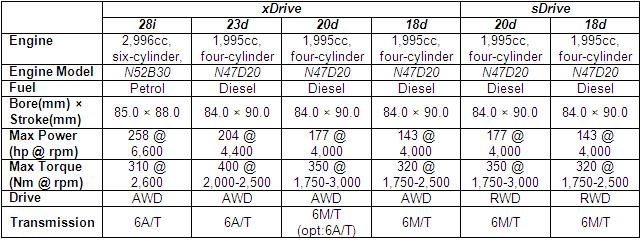
Drivetrain options for the X1.
The way it looks, can you handle it?
Like every new model coming out of Munich since the E65 7-series, the X1’s looks will polarise opinions, and it will continue to do so until the end of its model cycle and beyond. We’ll start from the front. The press release from BMW claims that the “front end spells out powerful presence right from the start”, and boy, it does. Whether this “powerful presence” is seen in a positive light is open to debate, but what is not open to debate is that it is not what you would call a boring design. Just look at the pictures if you need proof. You’ll either love it, or hate it.
Dominating the front styling are the huge oversized kidney grilles, a design cue which would characterize the upcoming generation of BMWs starting with the F01 7-series and the upcoming F10 5-series as well. The headlights, which still house the trademark angel-eye headlamp design, appear to be formed from an odd mix of headlamp units from the E60 5-series and the X3, with the former contributing the smooth curves, and the latter contributing the oddly angled cut-off lines.

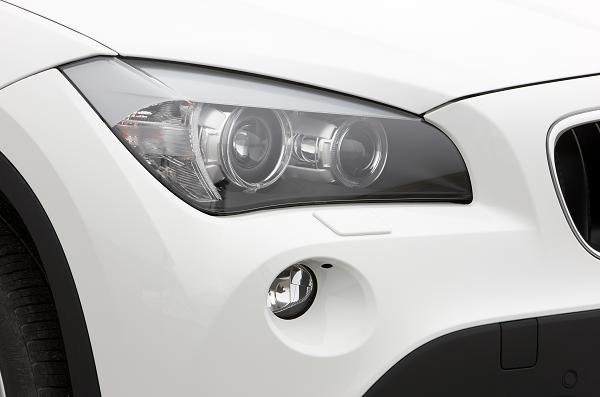
Oversized double kidneys dominate front end. Headlamps look like odd mix of E60 and X3.
In a further display of oddity, the foglamps are moved almost to waist level, located just centimetres below the headlights and embedded deep into the bumper. This made room for a huge gaping air intake vent at the lower bumper. The resulting fascia is controversial at best, and offensive at worst, resembling an animal that would bite your head off. Nevertheless, if BMW set out to make sure that this thing gets attention wherever it goes, they have succeeded big time. When an X1 closes in on your mirrors, you will not mistake it for anything else.
The side view of the BMW X1, and this is in BMW’s own words, is characterised by three striking lines. Which three? Well, unless you took a degree in automotive design, you are unlikely to spot them consciously. The most obvious one is the contour line joining the two door handles. It starts from the trailing edge of the front fender and rises up the X1’s waistline going back all the way to meet the tail lights. Together with the sill-line below, it creates, according to BMW, a ‘dynamic wedge shape’. At the starting point of the contour line up front, the third line then angles downwards before leveling and rising back up to connect with the C-pillar, meeting at what BMW still thinks is a Hoffmeister kink.
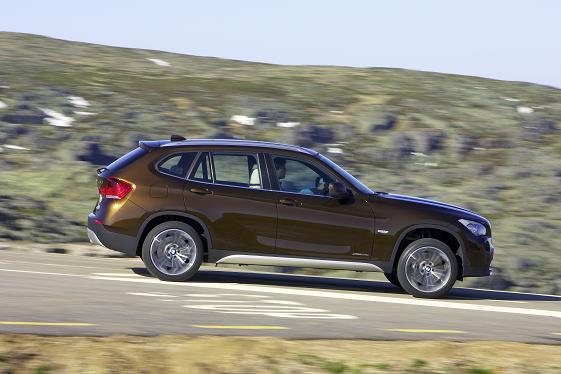
See the ‘dynamic wedge shape’?
The X1 actually looks the most pleasant from the back, but even then it has some very fussy lines. For example, the L-shaped tail lamp cluster is characterised by odd meetings of angles which you usually see appearing only in schoolchildren’s drawings. The rear bumper is probably the most neatly designed element of the whole car, with a simple grey finish and silver-coloured insert giving the X1 a tough SUV stance. For the facelift, BMW definitely needs to smoothen a lot of the X1’s lines.
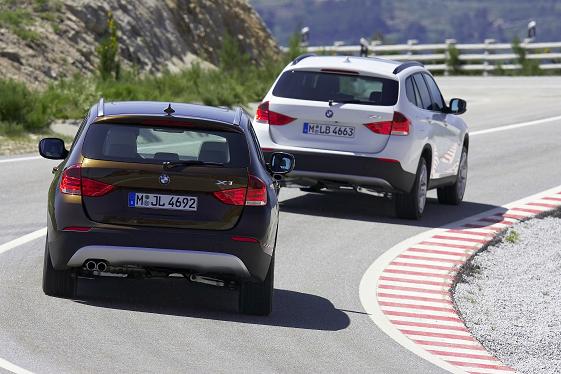
Rear end is the best view of the X1.
Getting inside
At this point the various bombastic terms cooked up by the BMW marketing team are already spinning our heads in one direction and then the next. Wouldn’t you, when a press release tells you how ‘the instrument panel is subdivided by horizontal lines creating a special structure continuing into the door panels which, by accentuating the sheer width of the vehicle, heightens the generous feeling of space’?
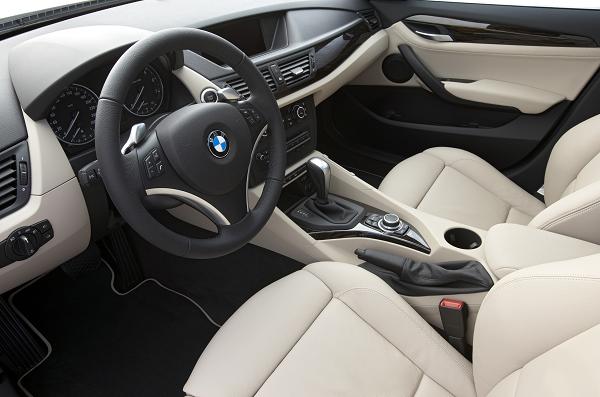
OK, we know this is a dash, but BMW has very big ideas on what it is.
We don’t know what all that means in plain English, but from the images made available to us, we can see that the X1’s dash has far more interplay of curves compared to those found in the other BMWs. While the dash of the 3-series looks like it was painstakingly measured to perfection by stencils and protractors, the dash of the X1 looks far more like a flowing work of art. This contrasts with all the odd clashing of angles seen outside. In fact, when trimmed in full black, it even looks classy and elegant.
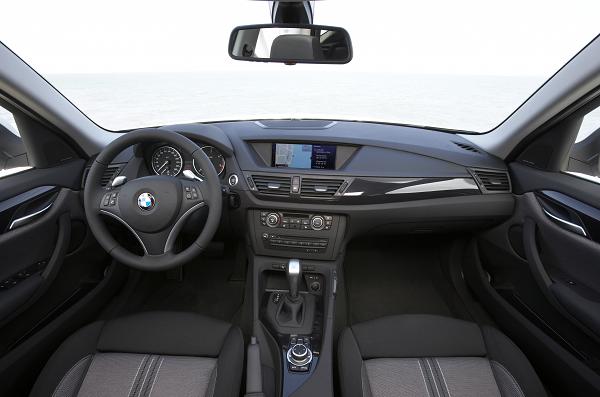
Looks rather good in black, it has to be said.
By default, the BMW X1 is a five-seater with 420 litres of luggage capacity. The back seats feature 40:20:40 split folding capability. They could be reclined by as much as 31 degrees for a snooze, or could simply be stowed away to obtain an enormous 1,350 litres of luggage capacity.
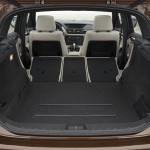
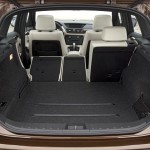

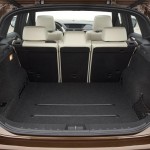
Various possible folding combinations of the rear seats.
The Engines
The geniuses in their engineering and marketing departments have enabled BMW to package a total of six variants out of only two engines. In Malaysia, we are now more than familiar with the N52 engine, seeing it in the 323i, 325i, 523i, 525i, and even the z4 sDrive23i. The range-topping X1 xDrive28i gets the bigger 3.0-litre version of the said engine, displacing 2,996cc and producing 258hp @ 6,600rpm. BMW has tuned the engine’s torque curve to peak in mid-range, with all 310Nm of shove coming in at 2,600rpm.
Coupled with a six-speed automatic transmission, the only petrol variant of the X1 is claimed to complete the century sprint in 6.8 seconds. This most powerful version of the X1 maxes out at a top speed of 205kph, though an optional high-speed set-up allows it to go as high as 230kph. On the EU test cycle, its consumption is rated at 9.4 litres/100km, while carbon dioxide emission is at 219 g/km.
The remaining five models are diesel powered, three of them all-wheel drive, two of them rear wheel drive. All of them receive propulsion from the 1,995cc N47 inline-4 diesel in various stages of tune. On top of the diesel range is the xDrive23d. Boosted by BMW TwinPower Turbo technology, the engine produces 204hp @ 4,400rpm and a truly astonishing 400Nm of torque available between 2,000rpm and 2,250rpm. Injection is controlled in precision by piezo-electric injectors spraying fuel into the combustion chambers at 2,000 bar pressure.
The other two states of tunes sees the N47 paired with a single variable geometry turbocharger to produce 177hp and 143hp respectively. The former state of tune powers the all-wheel drive xDrive20d and rear-wheel drive sDrive20d, while the latter sees action in the xDrive18d and sDrive18d. In the 20d models, the engine produces the said 177 hp at 4,000rpm. The torque curve visibly flatter than the 23d, and maintains its lower peak of 350Nm from 1,750rpm until 3,000rpm. For the xDrive18d and sDrive18d models, peak torque of 320Nm is delivered from 1,750 to 2,500rpm, while its peak power of 143hp comes at 4,000.
With the exception of the 18d variants, all versions of the X1 are electronically limited to 205kph, though buyers will have the option of removing the limiter by means of what BMW calls a ‘high-speed set-up’. Equipped with various BMW EfficientDynamics measures, all variants of the X1 are compliant to EU5 emission standards. As expected of BMW diesels, the d variants marry strong performance with stingy fuel consumption, with both the sDrive models dipping below the 5.5 l/100km mark.
Handling
The supreme abilities of the xDrive is already well-publicized in how it makes behemoths like the X5 and X6 handle in ways that SUVs are not supposed to be capable of. Therefore, despite its questionable looks, there should be little doubt on the abilities of the X1 should you decide to take one for a spin at Cameron Highlands, Ulu Yam or Balik Pulau. Connected to the Dynamic Stability Control (DSC), the xDrive system can instantaneously re-route power away from spinning wheel(s) to the ones with more grip on the onset of slip.
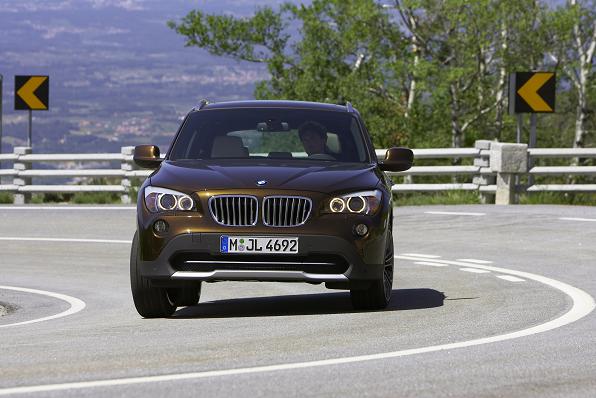
Expect more physics-defying handling, thanks to xDrive.
When taking corners, the xDrive system automatically feeds more power to the rear axle to avoid understeer, before returning to its original setting upon exit. The optionally available Performance Control system complements it by braking the inner rear wheel when it detects the front wheels pushing out of bends excessively.

Performance Control curbs understeer by braking inner rear wheel.
In the suspension department, the BMW has equipped the X1 with an ultra-sophisticated setup. The xDrive models get a double-joint thrust bar front axle, while the sDrive models feature an aluminium double-joint tiebar setup. Complementing this setup at the back is a five-arm rear axle design for all models. Translated to English, it essentially means that the X1 has double wishbones up front and multi-link suspension behind, full stop.
X1 can take the rough stuff too.
For the steering system, BMW has opted for the good old hydraulic power-assisted rack-and-pinion setup. The xDrive models also get the speed-sensitive Servotronic steering assistance system available as an option.
Availability
As this writer finally completed this write-up on 15 July 2009, a full eight days after getting hold of the 27 page press release, we remain perplexed by BMW’s latest niche product. While there is no doubt that the X1 will drive like a dream, and will fly off the shelves, what is the ultimate point of it? A cheaper means to BMW X ownership? A premium small SUV? But isn’t that the purview of the X3? We suppose some questions will continue unanswered.

We know it’s definitely a brilliantly engineered product, but ultimately, for what?
The X1 will be rolling out this October from the same line as the 1-series in BMW’s Leipzig plant. We are uncertain how BMW Malaysia plans to incorporate this model in its lineup here, but we are not expecting to see it here in the flesh until at least early 2010.



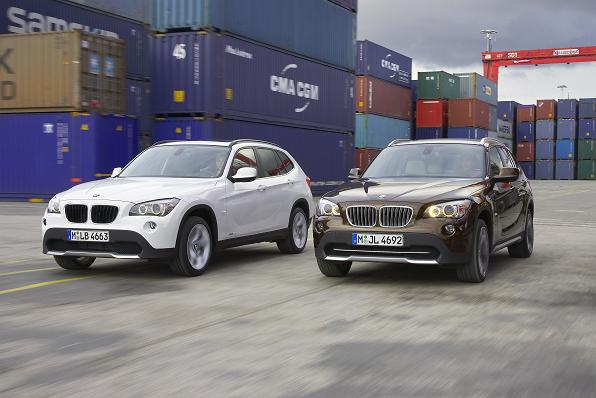
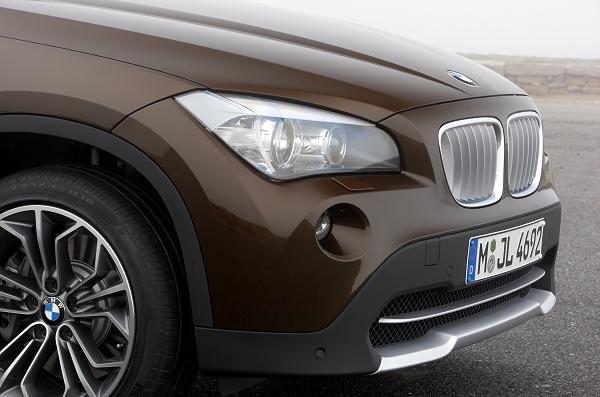

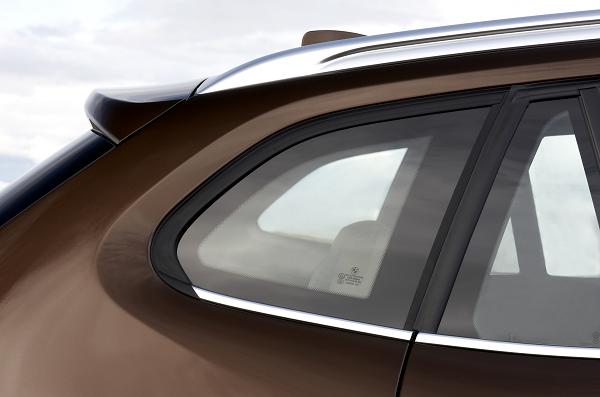

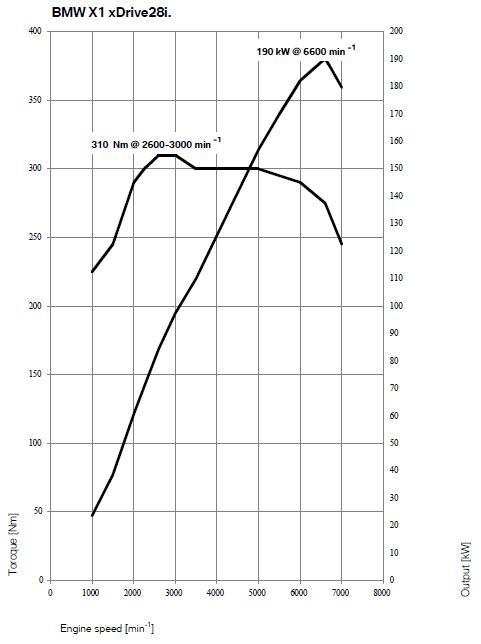


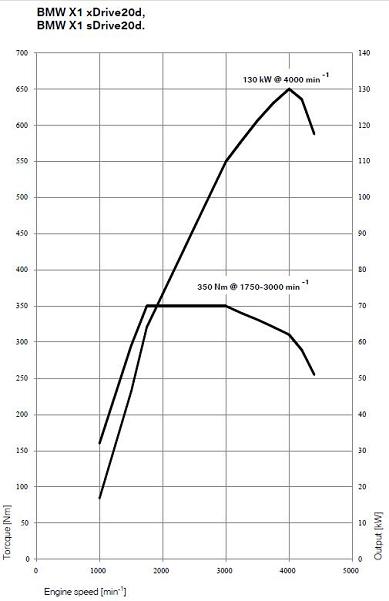






















Great article as always, thank you for posting all this helpful content on a regular basis.